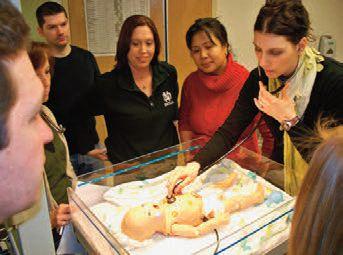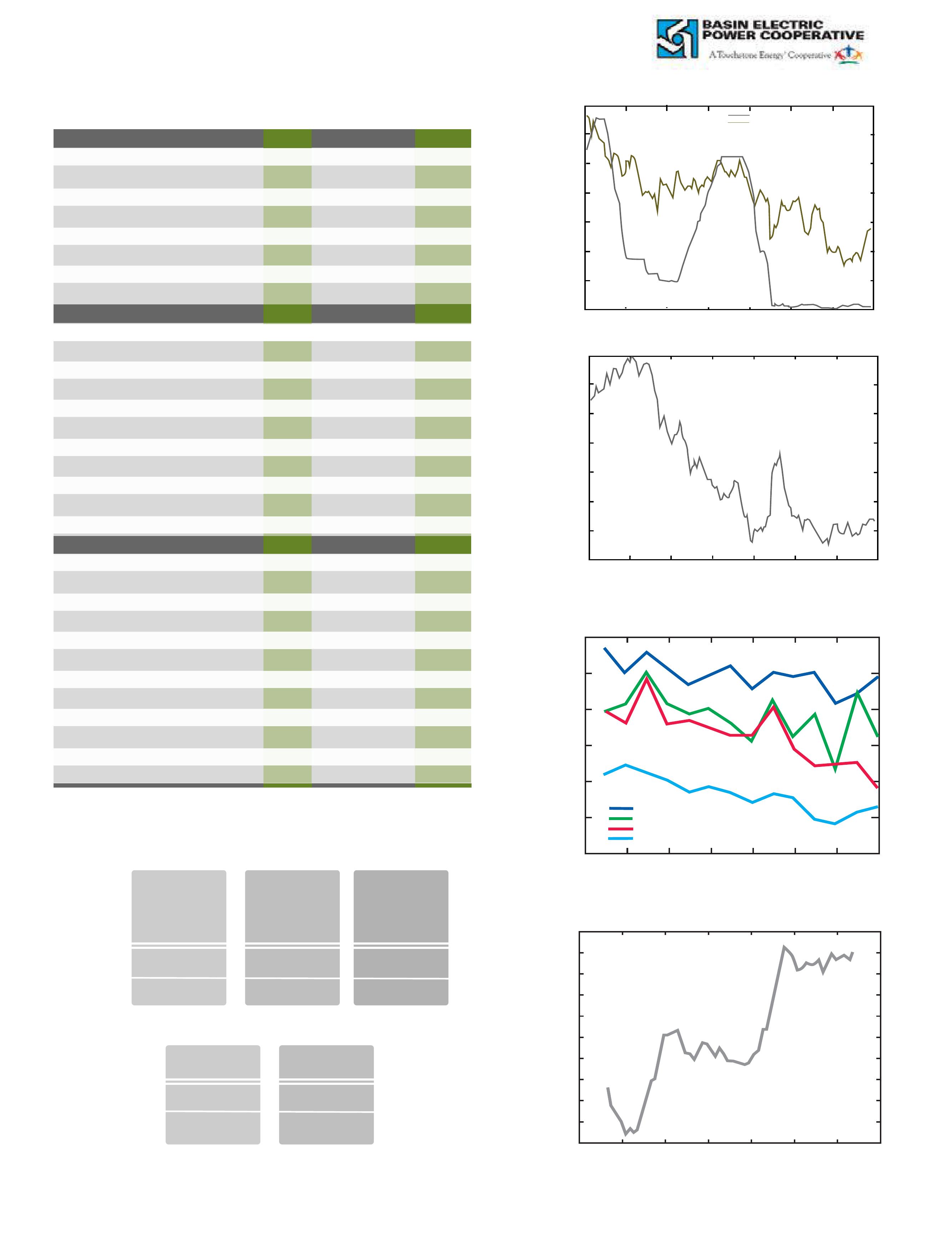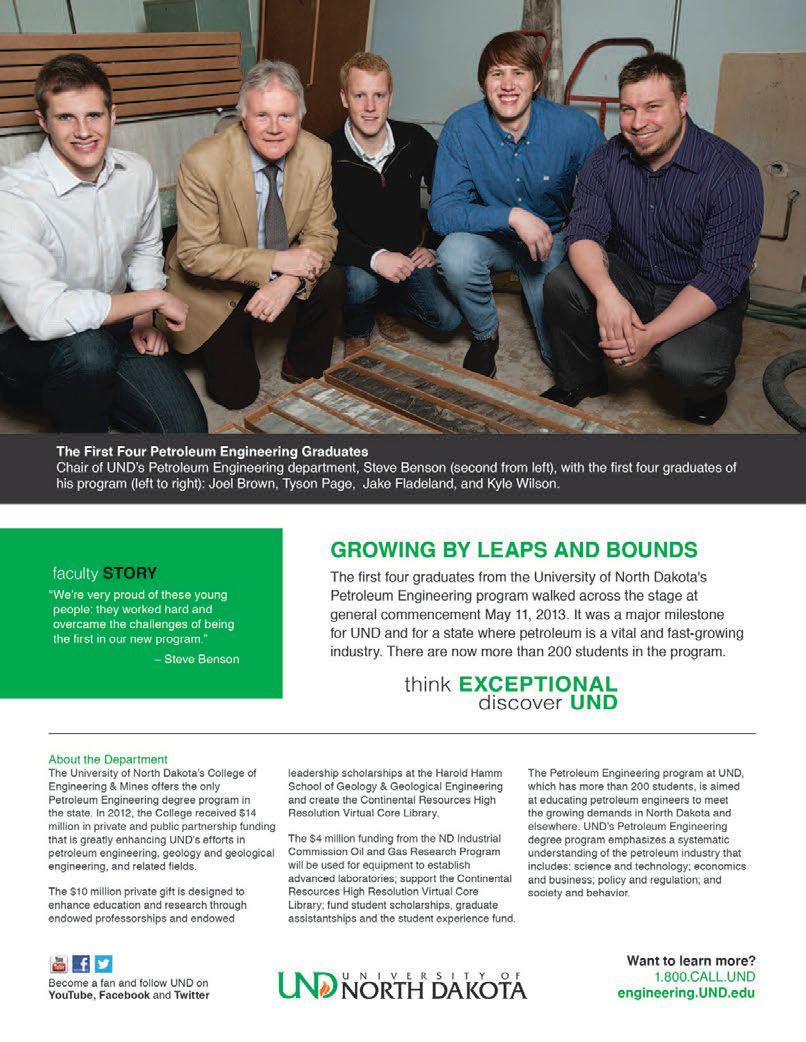
5 minute read
Booming Bakken prompts medical expansions
Surging populations require larger facilities, more staff, more specialties
BY KRIS BEVILL
Sanford Health is constructing a clinic in Dickinson, N.D., which will triple the size of its current clinic space. The project is one of many health care expansion projects being carried out throughout the region in order to accommodate tremendous population growth.
PHOTO: SANFORD HEALTH
Health care facilities are not exempt from the constant struggle to keep pace with the demands of the Bakken oil boom. Patient loads at some western North Dakota clinics and hospitals have more than tripled in the past three years as the Bakken oil boom has drawn a historic number of people to the region, leaving organizations strapped for staff and space. Many facilities are also calling for additional specialties not previously necessary at their locations as they adapt to new demands associated with an industry prone to specific injuries and an exploding population base. And of course, housing also impacts health care providers and organizations continue to require additional housing units to shelter new workers. There is no doubt that more medical services are needed, but health care facility expansions are not easy to pull off anywhere, much less in the fastest-growing region of the country. And yet health care organizations are managing to expand and improve their services in places including Dickinson, Watford City, Tioga and
Williston, and leaders say workforce and housing shortages won’t deter them from providing the services needed in those communities.
“These aren’t bad things in any way,” says Craig Lambrecht, president of Sanford Health in Bismarck, N.D. “We’re in legendary times in western North Dakota. It’s just a matter of positioning ourselves so we’re part of that infrastructure and recognize the challenges and take them on. This is a great opportunity.”
Sanford Health is currently constructing a $30 million “super clinic” in Dickinson. The new clinic is expected to open in the spring, slightly ahead of schedule, and will replace Sanford’s current clinic, which Lambrecht says is outdated and too small. “The building we’re in now is a very tired building,” he says. “It does not have enough space for us to support the medical needs of the community or our own providers.”
At 80,000 square feet, the new clinic will be nearly triple the size of its current facility. The clinic will also be located on the fast-growing west side of Dickinson, as opposed to the current clinic’s location near the center of town, in order to better support the community’s growing population, Lambrecht says. And while construction has been going well and the facility may open earlier than expected, it seems it can’t open soon enough. The current clinic saw 210 patients in one day in October, setting a new record for the clinic and representing an incredible task to accomplish, Lambrecht says. “And we only anticipate that that’s going to increase as far as patient volume access,” he says.
When the new facility opens its doors, it will house 18 to 20 doctors and will support specialty services including cardiology, orthopedic surgery and cancer care, among others. Lambrecht says Sanford will also continue to provide various specialty services as needed throughout western North Dakota. Specifically, he says the organization’s occupational medicine program has been communicating with 17 counties throughout the region in order to better meet the needs of employees and employers. Between the expanded facility, specialty service outreach and the organization’s new same-day service policy, Lambrecht says Sanford has “a good chance” of meeting the Dickinson area’s medical needs.
It can be assumed that the larger clinic will require additional employees, but Lambrecht hesitates to estimate the number of new staff members the organization expects to add, noting that low unemployment, housing shortages and a lack of daycare facilities make recruiting new employees extremely difficult. Case in point, a recent job fair hosted by Sanford in Bismarck attracted just 25 potential new hires.
“The biggest challenge we face right now in western North Dakota, and that includes Bismarck-Mandan, is workforce,” he says. “We need more workers. We have to retain the workers we have. We have salary challenges because the wages just keep escalating because the cost of living is going up.”
In Watford City, where the pace of development has reached a fever pitch and is not expected to slow anytime soon, McKenzie County Healthcare Systems Inc. is also dealing with an undersized and outdated facility, according to Tucker Petersen, chief operating officer. The current hospital sees an average of 550 patients per month currently, up from an average of 120 per month three years ago, he says.
Considering the increased need for emergency medical services, a population that is expected to triple within the next 15 years and a growing demand for accommodations for elderly patients, the organization determined that a new hospital, clinic and additional nursing home space is desperately needed. A needs assessment determined that an apartment building for medical workers and additional assisted living units should also be built.
A site for the new facilities was recently selected and Petersen says a ground breaking is expected next spring. The project cost is estimated at $55 million and the organization is seeking $40 million from the U.S. Department of Agriculture and $15 million from the Bank of North Dakota to fund the project. The new hospital would have the same number of beds, but would offer expanded emergency and operating room spaces as well as additional lab and radiology services. A timeline for project completion has not been determined.
The USDA’s Rural Development office has made health care in western North Dakota a priority, according to Jasper Schneider, state director, and has provided more than $20 million in funding for health care facility expansions in recent months.
In August, the agency approved $8 million in financing to construct a new clinic in Tioga to better serve the facility’s rapidly growing number of patients. In 2010, the Tioga Medical Center served about 6,000 patients. This year that number is expected to be more than 24,000, according to the rural development office. The new, 15,000-square-foot clinic will be attached to the existing hospital and will have 16 exam rooms, six provider offices and space for outpatient education and medical records storage.
In September, the rural development agency announced that Southwest Healthcare Services in Bowman has received $15 million to build a new hospital and clinic. Like other existing facilities throughout the region, the current medical facilities in Bowman are outdated and not large enough to adequately serve the community’s growing needs for medical care. The new project will consolidate separate hospital and clinic facilities under one roof in a 59,000-square-foot facility which will feature 10 inpatient beds, 24-hour emergency care services and other services. It will be attached to an existing long-term care center, which provides ample parking and the potential for future development, the agency said. The new facility is expected to be complete in 2015. PB
Kris Bevill Editor, Prairie Business 701-306-8561, kbevill@prairiebizmag.com

Join our PA Faculty in North Dakota

The state’s economy is healthy. So is its health care education!
The position includes good benefits and access to state-of-the-art simulation technology.

See job description at med.UND.edu/physician-assistant/job-opportunities.cfm.

Interest Rates Exchange
Jan2000 Jan2002 Jan2004 Jan2006 Jan2008 Jan2010 Jan2012 Jan2014 7 6 5 4 3 2 1 0 Percent E ective federal funds rate 10-year treasury constant maturity rate
Jul-12 9,322 7,467 874,460 676,249 179 183 1.6 1.5 1.4 1.3 1.2 1.1 1 0.9
Percentage of residents with health insurance
Oil Production MN ND SD US
Producing Wells Average Daily Production Total Permits Canadian Dollars to One U.S. Dollar 94 92 90 88 86 84 82 1998 2000 2002 2004 2006 2008 2010 2012
AverageRig Count |BY THE NUMBERS| | SPONSORED BY | Jan2000 Jan2002 Jan2004 Jan2006 Jan2008 Jan2010 Jan2012 Jan2014
Percent Year 16.8 16.6 16.4 16 15.8 15.6 15.6 15.4 15.2 15 14.8 Jul 1997 Jan 2000 Jul 2002 Jan 2005 Jul 2007 Jan 2010 Jul 2012 Jan 2015
% of total personal comsumption expenditures Date
Data provided by David Flynn, chair of the University of North Dakota Department of Economics. Reach him at david.flynn@business.und.edu.












